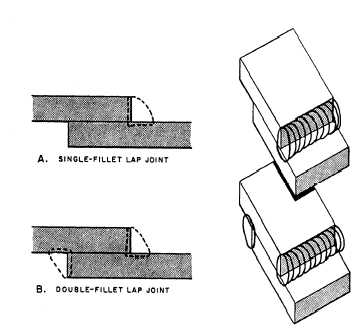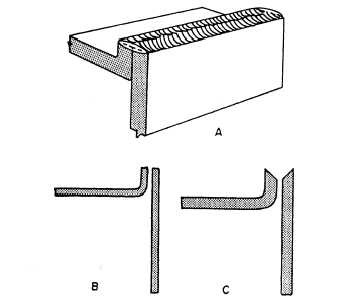
Figure 3-26. - Tee joints.
The single-bevel tee joint (fig. 3-26, view B) can withstand more severe loadings than the square tee joint, because of better distribution of stresses. It is generally used on plates of 1/2 inch or less in thickness and where welding can only be done from one side.
The double-bevel tee joint (fig. 3-26, view C) is for use where heavy loads are applied and the welding can be done on both sides of the vertical plate.
LAP JOINTS
The single-fillet lap joint (fig. 3-27, view A) is easy to weld, since the filler metal is simply deposited along

Figure 3-27. - Lap joints,

Figure 3-28. - Flanged edge Joints.
the seam. The strength of the weld depends on the size of the fillet. Metal up to 1/2 inch in thickness and not subject to heavy loads can be welded using this joint.
When the joint will be subjected to heavy loads, you should use the double-fillet lap joint (fig. 3-27, view B). When welded properly, the strength of this joint is very close to the strength of the base metal.
EDGE JOINTS
The flanged edge joint (fig. 3-28, view A) is suitable for plate 1/4 inch or less in thickness and can only
Continue Reading